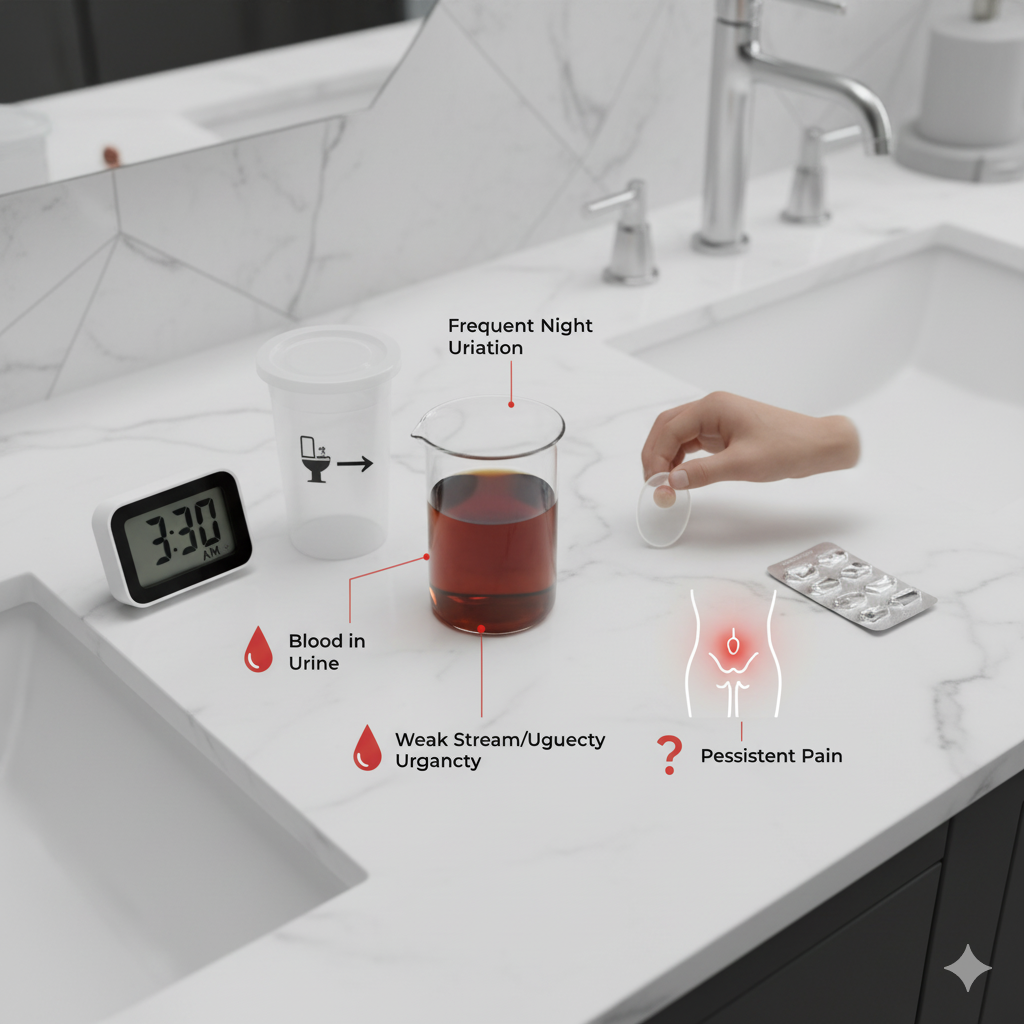It’s not exactly a topic for polite dinner conversation, but what happens in your bathroom can sometimes offer vital clues about your health. When it comes to urological cancers – those affecting the kidneys, bladder, prostate, and testes – recognizing early warning signs can make a significant difference in outcomes.
Many symptoms can be subtle or easily dismissed, but being aware of these “red flags” can prompt an important conversation with your doctor.
1. The Unsettling Sight: Blood in Your Urine (Hematuria)
This is perhaps the most critical red flag and should never be ignored.
- What to look for:
- Visible blood: Urine that appears pink, red, or even brownish (like cola). It might be present once, or it might come and go.
- Microscopic blood: Sometimes, blood isn’t visible to the naked eye but is detected during a routine urine test. Your doctor will inform you if this is the case.
- Why it’s a red flag: Blood in the urine can be a sign of bladder cancer, kidney cancer, or prostate issues. While it can also be caused by less serious conditions like UTIs or kidney stones, it always warrants investigation by a healthcare professional. Don’t assume it’s “nothing.”
2. Changes in Urination Habits: More Than Just Getting Older
As we age, some changes in bladder function are normal. However, certain shifts can signal a problem.
- Increased Frequency & Urgency:
- What to look for: Needing to urinate much more often than usual, especially waking up multiple times at night (nocturia). Feeling a sudden, strong urge to go, sometimes with difficulty holding it.
- Difficulty Urinating:
- What to look for: A weak or interrupted urine stream, straining to urinate, or feeling like your bladder isn’t completely empty after you go.
- Pain or Burning During Urination:
- What to look for: Discomfort or a burning sensation while passing urine. While often a sign of a UTI, if it persists or recurs without infection, it needs checking.
- Why these are red flags: These symptoms can be associated with bladder cancer (especially frequency/urgency) or prostate cancer (difficulty, weak stream) in men. They can also point to benign conditions, but ruling out cancer is crucial.
3. The Scrotal Self-Check: Lumps and Bumps You Shouldn’t Ignore (Men)
Testicular cancer is one of the most common cancers in young men (ages 15-45), but it’s also highly treatable when caught early.
- What to look for (during or after a warm shower):
- A painless lump or swelling in either testicle.
- Any change in the size or shape of a testicle.
- A feeling of heaviness in the scrotum.
- A dull ache in the groin or lower abdomen.
- Why it’s a red flag: A new lump or swelling in a testicle should be investigated immediately. Perform regular self-exams so you know what’s normal for you.
4. Persistent Aches and Pains: Beyond a Pulled Muscle
While less directly “bathroom-related,” these pains can be connected to urological cancers and might be noticed during daily activities, including personal hygiene.
- What to look for:
- Persistent back, side, or abdominal pain: Especially if it’s dull, constant, and not relieved by typical remedies. Kidney cancer can sometimes manifest as pain in the side (flank) or back.
- Bone pain: In advanced cases, prostate cancer can spread to the bones, causing persistent pain in the hips, back, or other areas.
- Why it’s a red flag: While most aches are benign, unexplained, persistent pain warrants medical attention, particularly if accompanied by other symptoms.
When to See a Doctor:
Don’t panic at the first sign of a symptom, as many of these can be caused by less serious conditions. However, do not delay seeking medical advice if you experience:
- Any visible blood in your urine.
- Persistent changes in your urination habits.
- A new lump or swelling in a testicle.
- Unexplained, persistent pain.
Your doctor can perform simple tests like a urine analysis, blood tests (like PSA for prostate cancer), or imaging studies to investigate further. Early detection often leads to more effective treatment and better outcomes.
Disclaimer: This blog post is for informational purposes only and does not constitute medical advice. Always consult with a qualified healthcare professional for any health concerns or before making any decisions related to your health or treatment.

